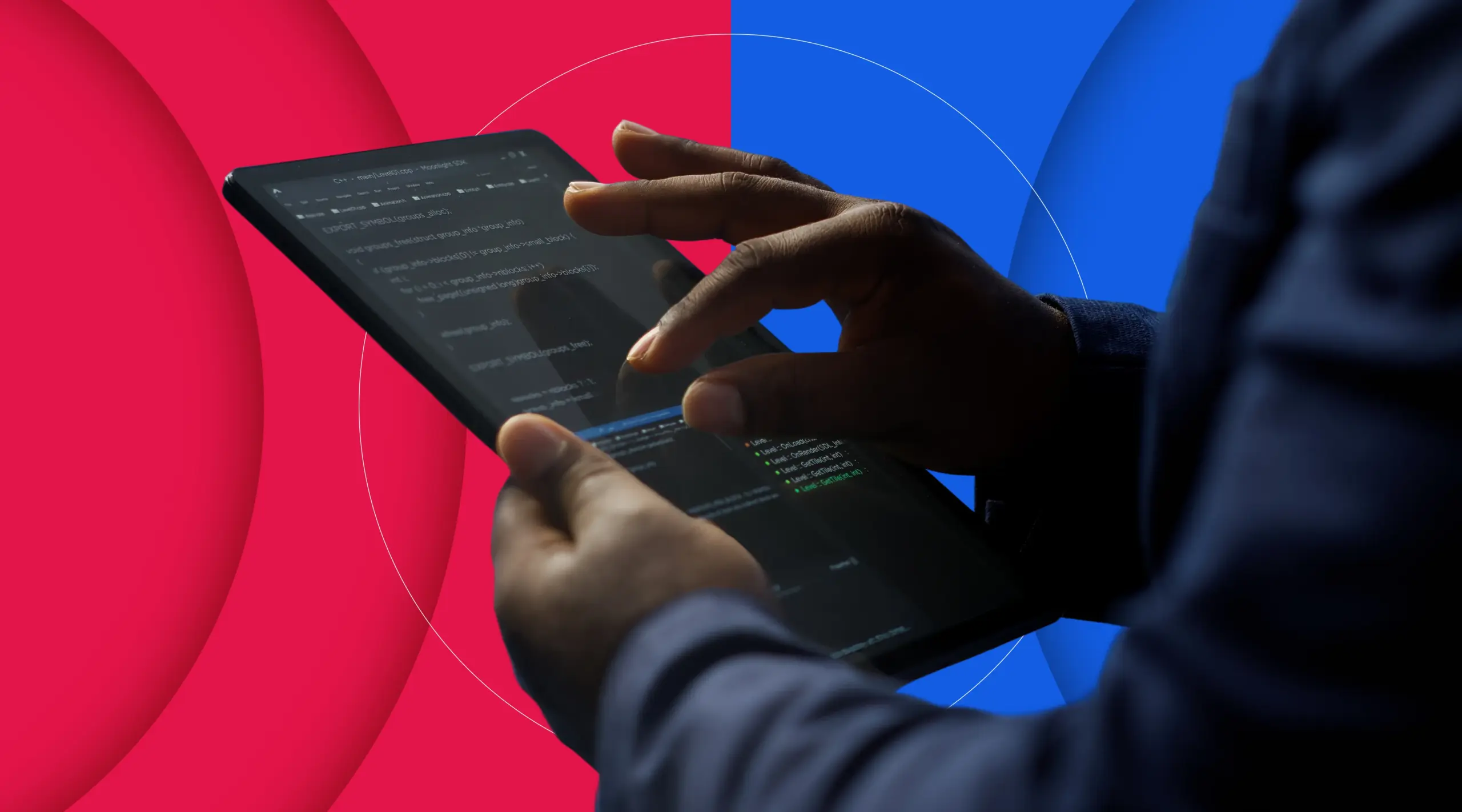
When talking about application development, the term SDK comes up often. Software Development Kits have become essential for technical and marketing teams. In fact, modern apps embed many SDKs — more than 15 on average in an Android application (Shoavi, Orly. « The All-Star Winners of Mobile App Tools (SDKs) ») — a sign of their omnipresence. But what exactly is a Software Development Kit, what is it for, and how can you use it effectively in your projects?
Here’s a complete overview: definition, types of existing SDKs (mobile, desktop, IoT, advertising, analytics, etc.), comparison with APIs, integration best practices (including GDPR privacy issues), concrete usage examples, and an FAQ to answer common questions.
- What is a SDK?
- Overview of the different types of software development kits
- SDK vs API: what’s the difference?
- 6 best practices for using software development kits: performance, security, GDPR…
- Real-world examples of popular software development kits
- FAQ – Frequently asked questions about software development kits
What is a SDK?
A Software Development Kit is a set of tools provided for developing applications on a given platform (specific hardware, operating system, or language). You can think of it as a complete toolbox made available to developers. A basic SDK generally contains a compiler, a debugger, and APIs (programming interfaces) to interact with the platform. It often also includes documentation, code libraries, examples, sometimes a dedicated development environment (IDE), and testing tools. In short, the SDK bundles everything needed to build applications for a specific target environment.
The role of an SDK is to make development easier and faster. Instead of rewriting complex features, developers can rely on these prebuilt tools. For example, rather than coding a mapping display system from scratch, it’s much simpler to integrate the provided mapping kit (Google Maps, Mapbox, etc.) and configure it as needed. You integrate an SDK into your app because it’s tailored to the target platform and provides ready-to-use solutions. In practice, integrating it generally means adding the kit’s software library to your project (via a dependency import) and then using the functions/features it offers, guided by the documentation.
Overview of the different types of software development kits
There is a wide variety, which can be classified by target platforms or by provided functionality. The comparative table below presents several major types and their characteristics:
| SDK type | Description | Examples / ecosystem |
|---|---|---|
| Mobile | Kits for building mobile applications (smartphones/tablets). Access to OS APIs (camera, push notifications, GPS, etc.), dedicated tools (emulators, mobile compiler). | Android SDK, iOS SDK (APNs, camera, etc.), Kotlin Multiplatform SDK, Xamarin SDK. |
| Desktop | Kits for developing desktop applications (Windows, Mac, Linux). OS access libraries (files, UI, etc.) + tools (native compiler, debugger). | Windows SDK, macOS SDK, Java Development Kit (JDK), Qt SDK (cross-platform UI). |
| IoT (devices) | Kits for IoT & hardware devices. Libraries for sensors/boards, docs & guides for connecting devices. | Arduino SDK, Raspberry Pi SDK, AWS IoT Device SDK. |
| Advertising | Adtech kits to integrate monetization into apps: banners, video, ad performance measurement and limited collection of user data for marketing purposes. | Google Mobile Ads (AdMob) SDK, Meta Audience Network SDK, AppLovin SDK. |
| Analytics | Audience measurement & analytics kits: events, conversions, session duration, reporting & sometimes dashboards. | Firebase Analytics (Google), Adjust SDK, Flurry Analytics SDK, Adobe Analytics SDK. |
Other categories: this list isn’t exhaustive—there are many more to meet specific needs. For example, payment SDKs (e.g., Stripe’s SDK to easily integrate secure payments), messaging/communication SDKs (e.g., Twilio’s SDK to add SMS, calls, or video chat to your apps), social media SDKs (e.g., Facebook’s for login and sharing on Facebook), and game SDKs (e.g., Unity’s for the game engine). This diversity reflects the fact that for almost any feature or service you can imagine, there is probably an SDK designed to simplify its integration.
SDK vs API: what’s the difference?
APIs and SDKs are often confused, yet these concepts are related but distinct. Here are the key differences to remember:
- Scope and integration: an API (Application Programming Interface) is an interface exposed by software or an external service that you consume to exchange data or functionality. It is external to the application that uses it. In contrast, an SDK is a set of tools that you integrate within the application, specifically designed for the target platform. In short, the API is a “point of access” to an external service, whereas the SDK is an “internal toolbox” for the project.
- Functionality: an API typically offers a focused capability (e.g., a geolocation service, a payment service) exposed via simple calls, whereas an SDK provides a broader package potentially including multiple APIs, libraries, and utilities. The API represents ready-made “building blocks,” while the SDK is the full workshop containing those blocks plus everything needed to build an application.
In practice, SDKs and APIs are complementary. An SDK often contains APIs to communicate with a platform or service. For example, a mobile SDK integrates the system API to access phone features. But you can absolutely use an API without an SDK—for instance, by calling a third-party REST API directly from your code without any additional library. Remember: an SDK is a superset—it frequently includes one or more APIs plus other tools—whereas an API alone is just a software component enabling interaction between applications.
6 best practices for using software development kits: performance, security, GDPR…
Using SDKs in your projects can greatly accelerate development, but it comes with best practices—both technical and privacy-related. Here are some tips to integrate SDKs effectively and compliantly.
Choose reliable, well-fitted SDKs
Be vigilant when selecting SDKs to integrate. Favor official or well-recognized SDKs that are up-to-date and well documented. Avoid kits from unknown or outdated sources. Every SDK you add is third-party code in your app: ensure it has a good reputation (active community, positive reviews, etc.) and truly matches your specific needs (avoid piling on redundant SDKs).
Limit complexity
Integrate only the SDKs you need. The more kits you add, the more complex maintenance and debugging become (conflict risks, larger app size, performance impact). Regularly inventory your SDKs and remove those no longer useful.
Read the resources and configure correctly
Once you’ve chosen an SDK, study its official resources. Follow the step-by-step integration guides. Configure the SDK optimally—for example, disable unused modules or permissions; adjust collection settings (if possible) in line with your policies. Poor configuration can lead to bugs, security holes, or unintended leaks.
Respect privacy and GDPR
This is crucial. If the SDK collects personal information (identifiers, location, user behavior, etc.), you must obtain the user’s prior consent before any collection, in accordance with GDPR and cookie laws. Ensure the SDK suspends tracking operations until valid consent has been gathered. For example, an advertising SDK should only initialize targeting after the user agrees to ad tracking. Check that the SDK provides options to honor this consent (many GDPR-compatible advertising/analytics SDKs wait for a signal before activating collection). Also, disclose in your privacy policy that these SDKs are present and what information they process.
Security and updates
Integrate them bearing in mind they gain the same system access level as your app. Any permission granted to the app also applies to its third-party code (the SDK). It’s therefore vital to keep SDKs up to date (to benefit from security fixes) and to monitor their behavior. In 2023, for example, malware named SpinOK was distributed via an apparently legitimate advertising SDK, collecting sensitive user data without developers knowing. Other cases revealed SDKs that gathered far more data than expected. These incidents highlight the importance of auditing integrated SDKs: read release notes and security reports carefully, and run tests to detect any unwanted behavior.
Legal aspects
If you integrate a third-party SDK, make sure the relationship with the vendor is well framed. Check the SDK’s terms of use and license (most are free, but some have restrictions or usage fees for advanced versions). If the SDK involves exchanging personal data, a Data Processing Agreement (DPA) may be needed with the provider, who must also meet their obligations (security, transparency) as a processor or joint controller. Choosing compliant partners and working closely with your legal team is advised when user data is involved.
By following these best practices, you’ll gain the benefits of SDKs (faster development, ready-made features) while controlling technical and regulatory risks. The watchword is to integrate with full awareness: know what each SDK does in your app, and keep control over its behavior.
Real-world examples of popular software development kits
To illustrate the diversity of SDK use, here are a few notable examples of development kits widely used across the industry.
Firebase (Google)
Firebase, provided by Google, offers nearly everything you need to build and scale a mobile or web app. Firebase includes a wide range of ready-to-use backend services: user authentication, real-time database and cloud storage, push notifications, hosting, etc. It also features analytics and performance tools (Crashlytics, Performance Monitoring) to optimize apps in production. Developers appreciate Firebase because it saves time (many features are available without setting up a server) and scales easily as the app grows.
Facebook (Meta)
The Facebook SDK, now under Meta, is integrated by many mobile apps to leverage the social network’s features. It provides, for example, a simple password-less authentication system (Facebook Login), social-sharing tools, as well as analytics and ad-targeting capabilities tied to Facebook. With this kit, a developer can quickly let users sign in with their Facebook account, share content to their feed, or receive personalized ads via Meta’s Audience Network. It’s a must-have tool for anyone wanting to integrate a social or marketing layer connected to Facebook.
Adjust (mobile analytics)
Adjust specializes in mobile attribution and marketing analytics. Widely used by app marketers, it helps track the source of installs (ad campaigns, app stores, referrals), measure post-install user events (in-app purchases, signups, etc.), and consolidate this data to calculate campaign ROI. Concretely, the Adjust SDK is embedded in the app and sends information to Adjust’s servers whenever a user installs or uses the application, helping analyze which marketing sources perform best. Online dashboards complement the kit to visualize this data. Similar solutions include AppsFlyer or Kochava—proof that mobile analytics is a field rich in dedicated SDKs.
(Many other SDKs could be mentioned—Stripe for online payments, Google Maps for embedding maps, Unity for games, or AI kits like TensorFlow.js. The key point is that for almost every need, an SDK likely exists already, letting you avoid “reinventing the wheel.”)
In conclusion, SDKs are valuable allies for developers and technical decision-makers, accelerating the rollout of new features and the integration of third-party services. Whether you’re building a full mobile app with a multi-function SDK, adding a simple analytics tracking module, or adopting an innovative marketing solution like Web Push, the key is to understand each kit’s role and its technical and ethical implications so you can get the most from it. By being informed about best practices and the stakes (performance, security, privacy), you can integrate these development kits with confidence and focus on what truly matters: delivering the best possible user experience. Happy building!
FAQ – Frequently asked questions about software development kits
What’s the difference between an SDK and an API?
API = an interface that lets two applications communicate (exposes endpoints and functions).
SDK = a complete toolkit for building software: libraries, tools, docs, sometimes samples and an editor. It may include one or more APIs.
Analogy: the API provides bricks of functionality; the SDK is the entire workshop to build the application.
Example: Twitter exposes an API (HTTP requests for tweets) and offers SDKs that wrap this API as ready-to-use libraries.
How do I choose the right SDK for my project?
- Functional needs: UI, analytics, payments, auth, etc.
- Reliability & support: official or open-source, well maintained, update cadence, documentation quality.
- Compatibility: OS, language, versions, dependencies.
- Community: popularity, resolved issues, forums, examples.
- Compliance & security: what data is collected? Consent, minimisation, retention. Anticipate privacy requirements.
In short: pick an SDK that’s aligned with your goals, trusted for quality and data-frugal.
Are SDKs free or paid?
- Many are free (Apple, Google, etc.) to encourage adoption.
- Costs usually come from the associated service: transactions (payments), quotas, subscriptions (analytics), etc.
- Licensing: open-source (MIT/Apache) vs proprietary (specific terms). Check the license before use.
Does integrating a third-party SDK pose privacy risks?
- Collection surface: an SDK can access the same data as your app (e.g., IDs, location) → minimise collection.
- Transparency: choose reputable, documented kits, privacy by design.
- Consent: don’t collect/transfer anything before consent; allow users to withdraw it.
- Governance: track versions, security notes, and audit permissions.
With careful selection and compliant consent management, third-party SDK integration can remain privacy-safe.



